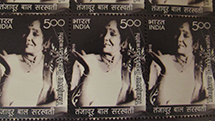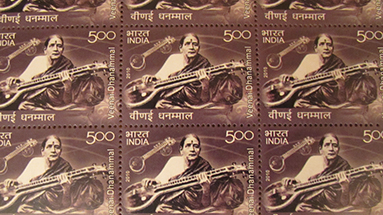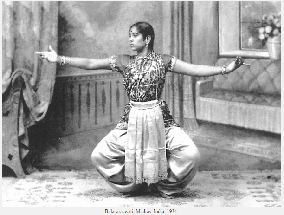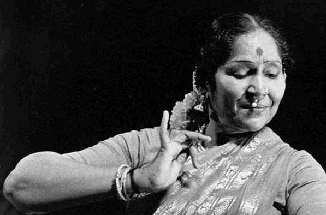

"Throughout the 1930s she captured the imagination of audiences all across India."
According to the Encyclopedia Britannica, "At age seven she had her arangetram (debut public performance) at a shrine to the goddess Devi in the city of Kanchipuram and stunned the audience with her rhythmically executed movements. As Balasaraswati matured, she became ever more adept at both nritta (nonrepresentational movement) and abhinaya (movement depicting specific emotions or moods). As a young teenager, she was seen by an internationally known Indian dancer and choreographer, Uday Shankar, who became an ardent promoter of her performances. Throughout the 1930s, she captured the imagination of audiences all across India."
Balasaraswati's dancing career took off in 1925 and she became a global performer earning the respect of many dancers and critics as far away as New York City. In 1976 a documentary film was even made about her by acclaimed director Satyajit Ray, entitled Bala. The link to the documentary is included under Media-Videos.
To recognize her contributions to Indian arts and culture, she was given the Sangeet Natak Akademi (India’s national academy of music, dance, and drama) award and the Padma Vibhushan, one of India's top honors in the arts.

In recognition of her stature in the arts, the Indian Government issued a commemorative stamp of Balasaraswati in 2010.

Balasaraswati's grandmother, Veenai Dhammal, was also recognized by the Indian Government in 2010 for her stature in the arts by issuing a commemorative stamp in her honor.

Balasaraswati dancing as a young girl in Chennai, India, 1934.

T. Balasaraswati started dancing at the age of five and continued to dance through her early 60s. She passed away at the age of 65.